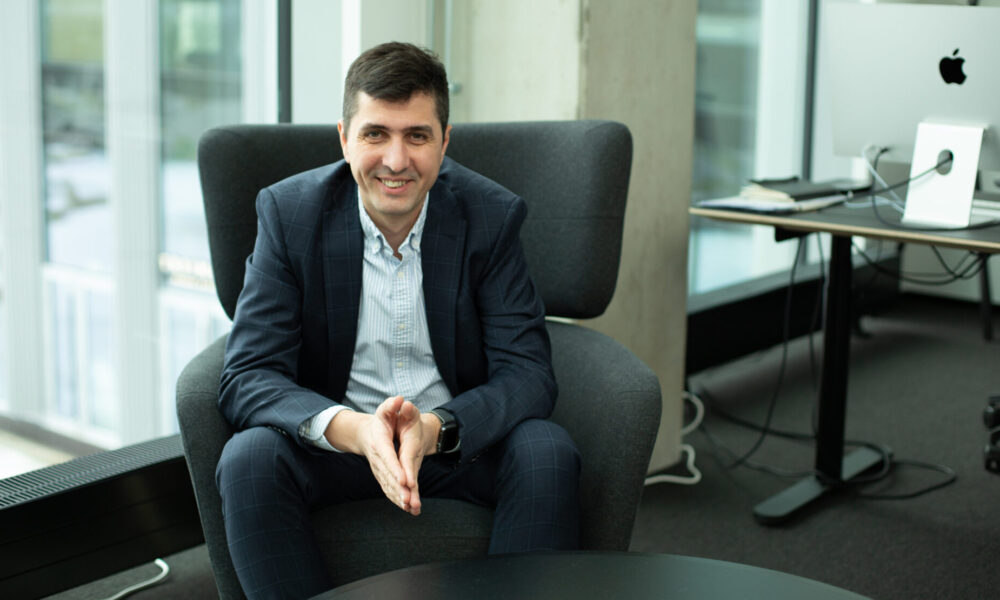By Dr. Ozlem DOULL
Author Website: Dr Ozlem DOULL
As a researcher in AI in services at Rennes School of Business, I’ve spent years studying how artificial intelligence is changing the way service industries operate through “predictive intelligence”. My theoretical model regarding how AI and service and sales workers can work together, predicts that these networks can bring out the best in people—sparking creativity and helping us make better decisions. At the same time, businesses are using AI to make customer experiences more personal, streamline their operations, and ensure services are accessible to everyone. In 2025, these ideas are coming to life in exciting ways across the globe. This article explores the top three AI trends in services to watch, with example scenarios from China, Japan, the US, and France, showing how AI is shaping the future of how we connect and operate.
Trend 1: AI That Knows You Better Than You Know Yourself
One of the biggest trends in services is AI that personalizes experiences to fit each person perfectly. Services marketing studies back this up, showing that personalized interactions lead to happier customers who are more likely to return. To illustrate the real-world relevance of my research framework on Artificial Intelligence and Frontline Innovativeness, first introduced at the 2020 Virtual Conference on AI, Machine Learning, and Business Analytics—organized by NYU Stern, Carnegie Mellon Heinz College, and Temple University’s Fox School of Business—I present the following practical illustrations that demonstrate how organizations might apply AI-powered frontline collaboration in practice.
- United States: In the US, companies are leading the way with AI that acts like a personal assistant. Take a big retailer like Walmart. In 2025, they might use AI systems, inspired by tools like Salesforce’s Agentforce, to create a shopping experience just for you. Imagine walking into a store, and your phone pings with a suggestion for a jacket that matches your style, fits the weather, and even considers your budget. The AI could pull this off by looking at your past purchases and preferences, then guiding you through the store with a friendly voice. This kind of predictive personalization frees up store staff to handle bigger tasks, like helping with tricky returns, while making customers feel seen.
- China: Over in China, e-commerce giants like Alibaba are taking personalization to the next level. Picture a shopper in Shanghai using the Taobao app in 2025. An AI assistant might notice they’ve been searching for running shoes and, using smart mirrors (i.e., virtual try-ons) in a nearby store, suggest a pair that matches their running habits—maybe even showing how the shoes would look on their feet. This builds on China’s massive tech investments, making shopping smoother and more engaging, while helping stores manage stock better by predicting what customers want.
- Japan: Japan has started using this trend in healthcare, where understanding patients is key. In 2025, a hospital in Tokyo might use AI to create care plans tailored to each patient. For example, an elderly patient could have an AI system that tracks their health data—like heart rate or sleep patterns—and suggests a treatment plan that fits their unique needs, all while coordinating with nurses. This reflects findings about AI bringing empathy into services, especially for Japan’s aging population, ensuring care feels personal and accessible.
- France: In France, luxury brands are jumping on this trend. Imagine shopping at an LVMH boutique in Paris in 2025. An AI system could look at your style preferences through your smartwatch, then suggest a custom-made handbag, complete with a design you’d love, and handle the order in your native language. This kind of personal touch keeps the luxury experience special, showing how AI can make high-end services even more exclusive while supporting staff creativity.
Trend 2: AI That Takes Care of the Boring Stuff
Another trend I notice is AI handling repetitive tasks so people can focus on what matters. My AI and frontline employees networks theory suggests that this frees up workers to be more creative and make smarter choices, while businesses run more smoothly. Services marketing ties this to better efficiency, meaning companies can do more with less effort. I explore some practical illustrations that demonstrate how organizations might apply the model’s insights to real-world challenges and opportunities:
- United States: In the US, the finance sector is a great example. In 2025, a bank like JPMorgan Chase might use AI to process loan applications. The AI could check documents, assess risks, and spot fraud, all without a human stepping in. This lets bank staff focus on helping customers with bigger financial decisions, like planning for retirement, while the AI ensures the process is fast and error-free, saving time for everyone.
- China: In China, manufacturing services are using AI to keep things running smoothly. A factory in Shenzhen might use systems inspired by Baidu’s AI tech in 2025 to automate quality checks. Robots could inspect products, and if something’s off, the AI adjusts the production line right away. This cuts down on waste and keeps costs low, aligning with my findings on how AI helps businesses operate more efficiently, especially in a fast-paced market like China.
- Japan: Japan is getting ready to apply this trend in logistics. In 2025, Japan Post might use AI-powered robots, guided by tech like SoftBank’s, to sort packages quickly and accurately. This ensures deliveries reach rural areas faster, which is a big deal in a country with a shrinking workforce. In my view, this kind of automation makes services more accessible, helping businesses reach more people without overworking their staff.
- France: In France, the government is getting in on this trend. In 2025, they might use AI to handle tax processing, cutting down on wait times for citizens. The AI could sort through filings, answer basic questions, and flag issues for human review, making the system faster and less stressful. AI streamlines operations, freeing up public servants to focus on more complex citizen needs while keeping trust intact.
Trend 3: AI That Makes Services Fair and Open to All
The third trend is about using AI responsibly to make services inclusive. AI can help us make better decisions while ensuring everyone has access to services, no matter their background or abilities. Let’s explore some more plausible use cases:
- United States: In the US, healthcare is seeing this trend in action. In 2025, a rural clinic might use Google’s AI systems to help doctors diagnose patients. The AI could look at medical records, scans, and even voice notes to suggest treatments, making quality care available in areas with fewer doctors.
- China: In China, education is benefiting from this trend. A university in Beijing might use AI tutors in 2025, inspired by research from Tsinghua University, to support students with disabilities. The AI could adjust lessons to fit their learning style—like offering audio for visually impaired students—making education more equitable.
- Japan: Japan is focusing on its elderly population. In 2025, Toyota might use AI in its mobility services, offering cars that respond to voice commands for older drivers. The AI could adjust settings for safety, like slowing down on busy roads, helping seniors stay independent.
- France: In France, cultural institutions are leading the way. In 2025, the Louvre might use AI to offer audio descriptions and sign language for visually impaired visitors, building on tech like the IRIS+ chatbot. This ensures everyone can enjoy art, no matter their abilities.
What This Means for the Future
My initial insights into AI–human networks, drawn from company AI strategies, suggest that when humans and AI collaborate, they can spark creativity in service design, bring empathy to customer interactions, and support better decision-making through clear, data-driven insights. Businesses are already using AI to create personal experiences (like tailored shopping), run things more smoothly (like automated banking), and make services accessible (like inclusive education). In 2025, these AI trends point to a future where AI is a partner – helping us work smarter, not replacing human contributions. But there are challenges—like ensuring AI doesn’t overstep on privacy or fairness, as seen in recent tech scams. Companies need to use AI thoughtfully, which is something my research will keep exploring.
Wrapping Up
These top AI trends in services for 2025—personalization, automation, and inclusivity—can change how businesses operate. As a researcher, I see these as proof of AI’s power to bring out the best in people and reshape services for the better. My research demonstrates how AI–human collaboration at the frontline can transform customer experiences, boost employee creativity, and improve decision-making. With the AI market growing fast, companies need to jump in wisely. Keep an eye on TechBullion.com for more updates on these trends, and think about how your business can use AI to make a difference.
About the author
Dr. Ozlem Doull is an Assistant Professor of Marketing at Rennes School of Business, France with a PhD from the University of Melbourne, Australia and over a decade of industry experience in customer service, e-commerce, and marketing communications. Her research focuses on frontline employee networks, AI in customer service, and social network analysis, driving insights into service innovation and employee-driven creativity.



































